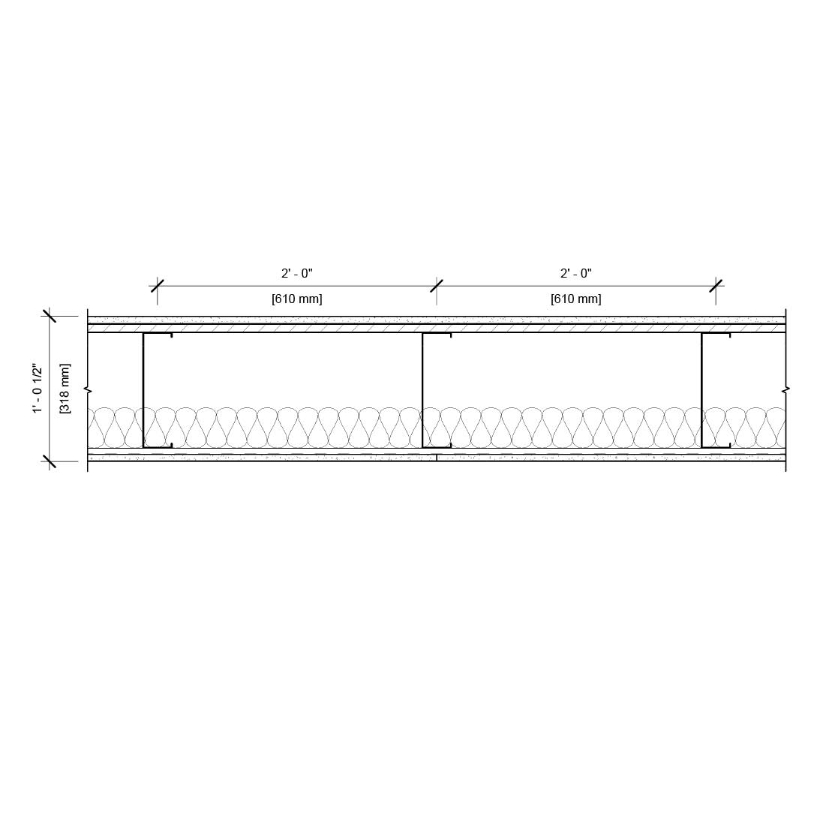In the realm of building safety and compliance, the concept of a “1 Hour Fire Rated Ceiling Assembly” plays a crucial role. This assembly refers to a construction method designed to resist the spread of fire from one floor to another for at least one hour. Such assemblies are critical in maintaining compartmentation and preventing the rapid spread of fire within buildings, thereby safeguarding lives and property.

Understanding 1 Hour Fire Rated Ceiling Assembly
A 1 Hour Fire Rated Ceiling Assembly typically consists of several components meticulously chosen to meet specific fire-resistance criteria. These components include fire-rated ceiling panels, structural supports, insulation materials, and sometimes additional fireproof coatings or barriers. The assembly’s effectiveness hinges on the combined performance of these elements under standardized fire testing protocols.
Components of a 1 Hour Fire Rated Ceiling Assembly
The core components include:
- Ceiling Panels: These are typically gypsum boards or specially formulated fire-rated panels designed to withstand high temperatures.
- Structural Elements: Such as steel or wooden joists that support the ceiling and maintain its integrity during a fire event.
- Insulation: Fire-resistant insulation materials placed between the floors to hinder the transfer of heat and flames.
- Firestop Systems: Intumescent seals or sprays around penetrations like pipes and ducts to prevent fire spread through openings.
Importance in Building Codes and Standards
Building codes universally mandate specific fire resistance ratings for various building components, including ceiling assemblies. A 1 Hour Fire Rated Ceiling Assembly aligns with these requirements, ensuring that buildings meet minimum safety standards. Compliance with such codes is non-negotiable in modern construction practices to enhance occupant safety and mitigate fire risks effectively.
Design Considerations for 1 Hour Fire Rated Ceiling Assemblies
Architects and engineers meticulously plan 1 Hour Fire Rated Ceiling Assemblies during the design phase of buildings. Factors such as building height, occupancy type, and fire protection goals influence the selection and installation of these assemblies. Moreover, the integration of fire alarm systems, sprinklers, and emergency egress routes further enhances overall fire safety measures.
Testing and Certification
Before implementation, manufacturers subject their 1 Hour Fire Rated Ceiling Assemblies to rigorous testing protocols. These tests simulate real-world fire conditions to verify the assembly’s ability to withstand fire for the specified duration. Certifications from recognized testing laboratories validate compliance with fire safety standards and provide assurance to stakeholders.
Maintenance and Upkeep
Ensuring ongoing functionality of 1 Hour Fire Rated Ceiling Assemblies requires regular inspections and maintenance. Any damage to ceiling panels, insulation, or firestops must be promptly addressed to uphold the assembly’s fire-resistance capabilities. Additionally, periodic inspections help identify potential hazards and ensure compliance with evolving building codes.
Advantages of 1 Hour Fire Rated Ceiling Assemblies
The primary advantages include:
- Life Safety: Protecting occupants by containing fire and smoke within designated areas.
- Property Protection: Minimizing structural damage and financial losses during fire incidents.
- Legal Compliance: Meeting regulatory requirements and avoiding penalties or legal liabilities.
- Insurance Benefits: Potentially reducing insurance premiums through enhanced fire protection measures.
Conclusion
In conclusion, a 1 Hour Fire Rated Ceiling Assembly is not just a building component but a critical safeguard against fire hazards. Its design, construction, and maintenance significantly contribute to overall building safety and regulatory compliance. By understanding its importance and adhering to best practices, stakeholders can effectively mitigate fire risks and create safer environments for all building occupants.
Read too: Striped Schoolhouse Ceiling Light Fixtures: Unveiling the Timeless Charm